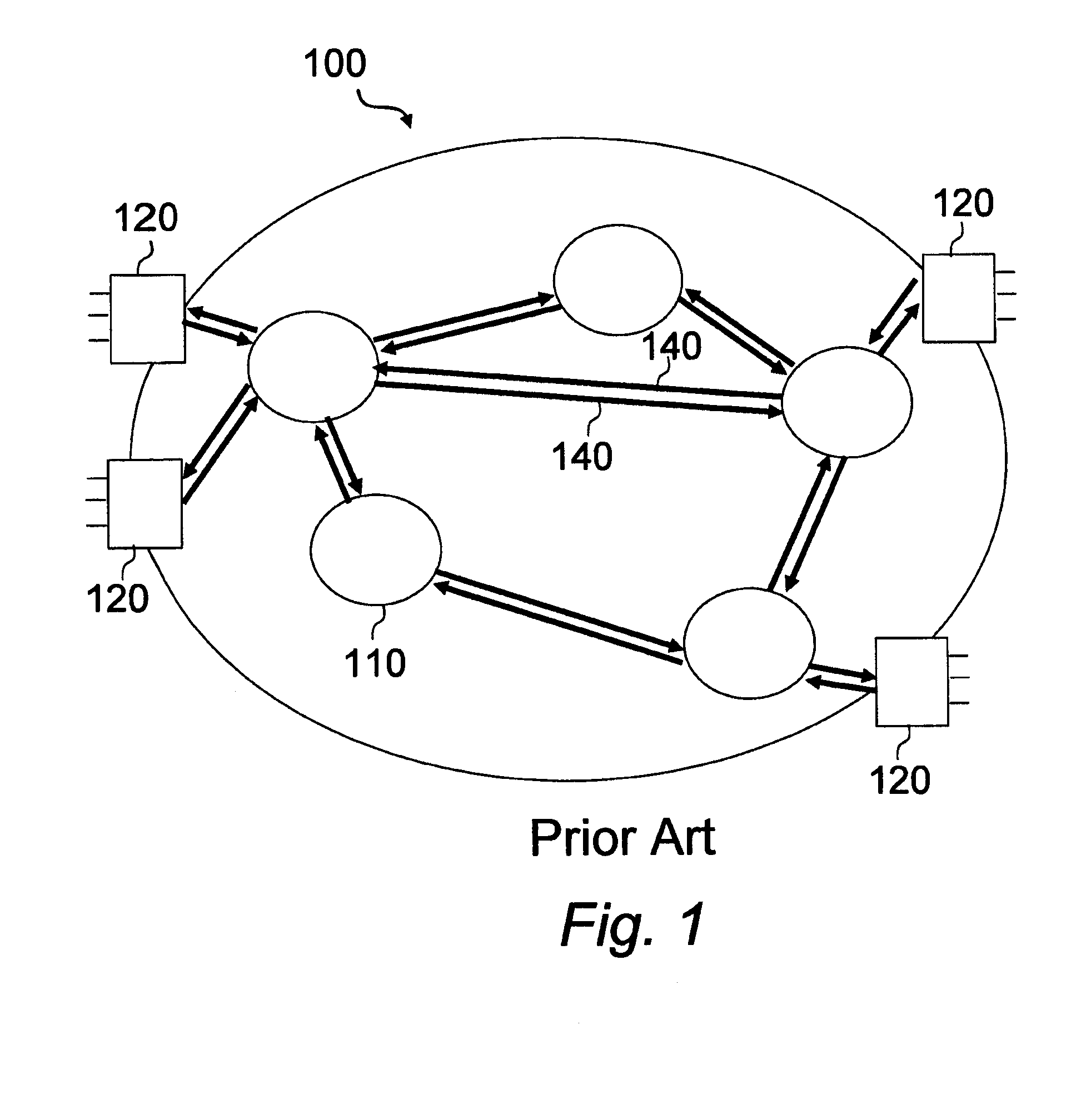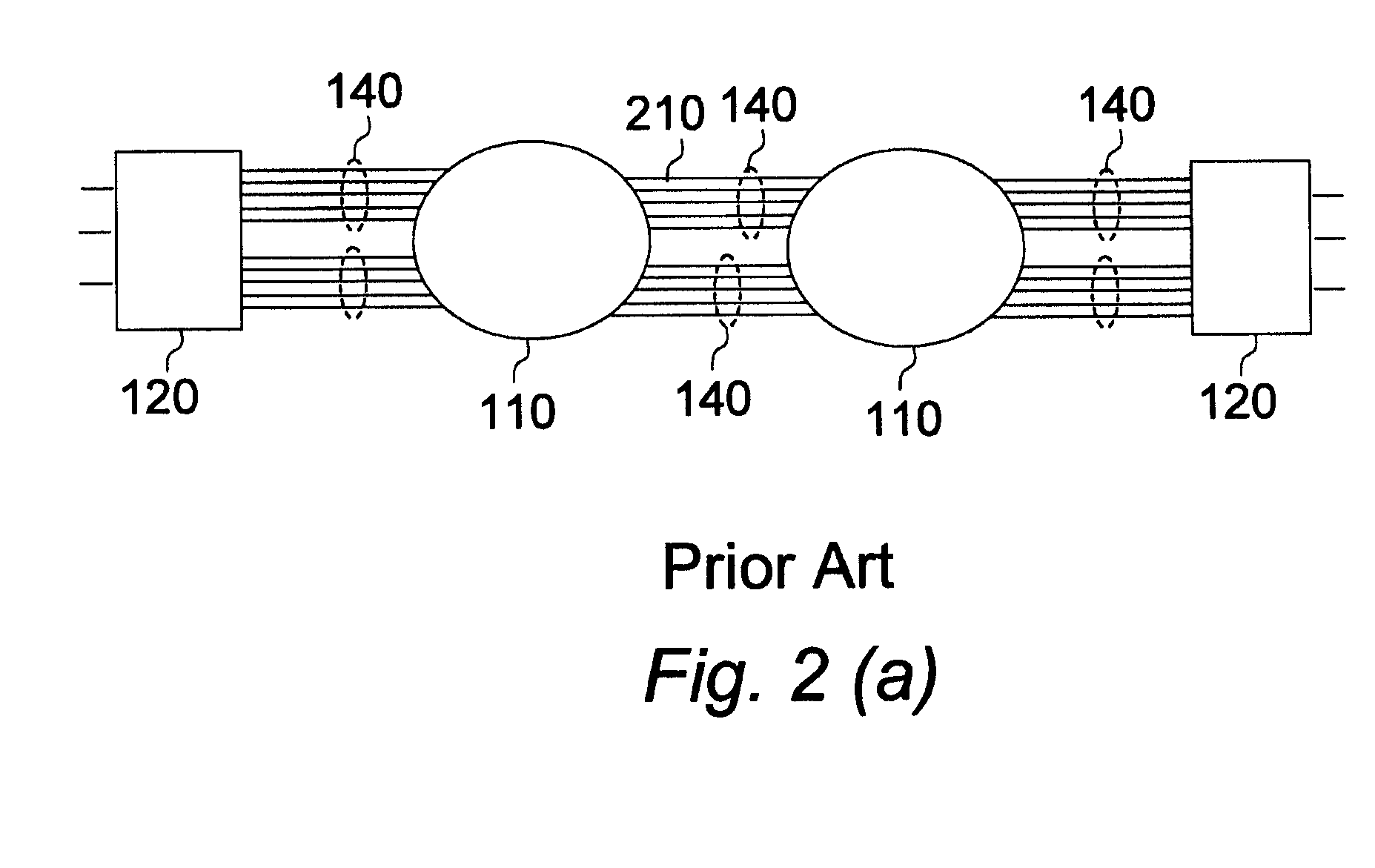Methods and apparatus for securing optical burst switching (OBS) networks
a technology of optical burst switching and optical burst switching, applied in the field of optical networks, can solve the problems of increased capacity, serious mismatch, increased cost, etc., and achieve the effect of reducing overhead
- Summary
- Abstract
- Description
- Claims
- Application Information
AI Technical Summary
Benefits of technology
Problems solved by technology
Method used
Image
Examples
Embodiment Construction
[0035]FIG. 1 shows an example of an optical burst switching network 100. The optical burst switching network 100 includes multiple electronic ingress and egress edge routers 120, and multiple optical core routers 110 connected by wavelength division multiplexing (WDM) links 140. The term WDM here includes both dense wavelength division multiplexing (DWDM) and coarse wavelength division multiplexing. The electronic ingress and egress edge routers 120 perform burst assembly and disassembly functions, and serve as legacy interfaces between the optical core routers 110 and conventional electronic routers.
[0036]As would be understood in the art, reference to a router as an ingress or egress router 120 is a relativistic term in that a single router can serve as an ingress or egress router depending on whether it is positioned at an origination point for data or a destination point for data. Similarly, a core router can be identical to an ingress or egress router in that it too can include...
PUM
 Login to View More
Login to View More Abstract
Description
Claims
Application Information
 Login to View More
Login to View More - R&D
- Intellectual Property
- Life Sciences
- Materials
- Tech Scout
- Unparalleled Data Quality
- Higher Quality Content
- 60% Fewer Hallucinations
Browse by: Latest US Patents, China's latest patents, Technical Efficacy Thesaurus, Application Domain, Technology Topic, Popular Technical Reports.
© 2025 PatSnap. All rights reserved.Legal|Privacy policy|Modern Slavery Act Transparency Statement|Sitemap|About US| Contact US: help@patsnap.com



